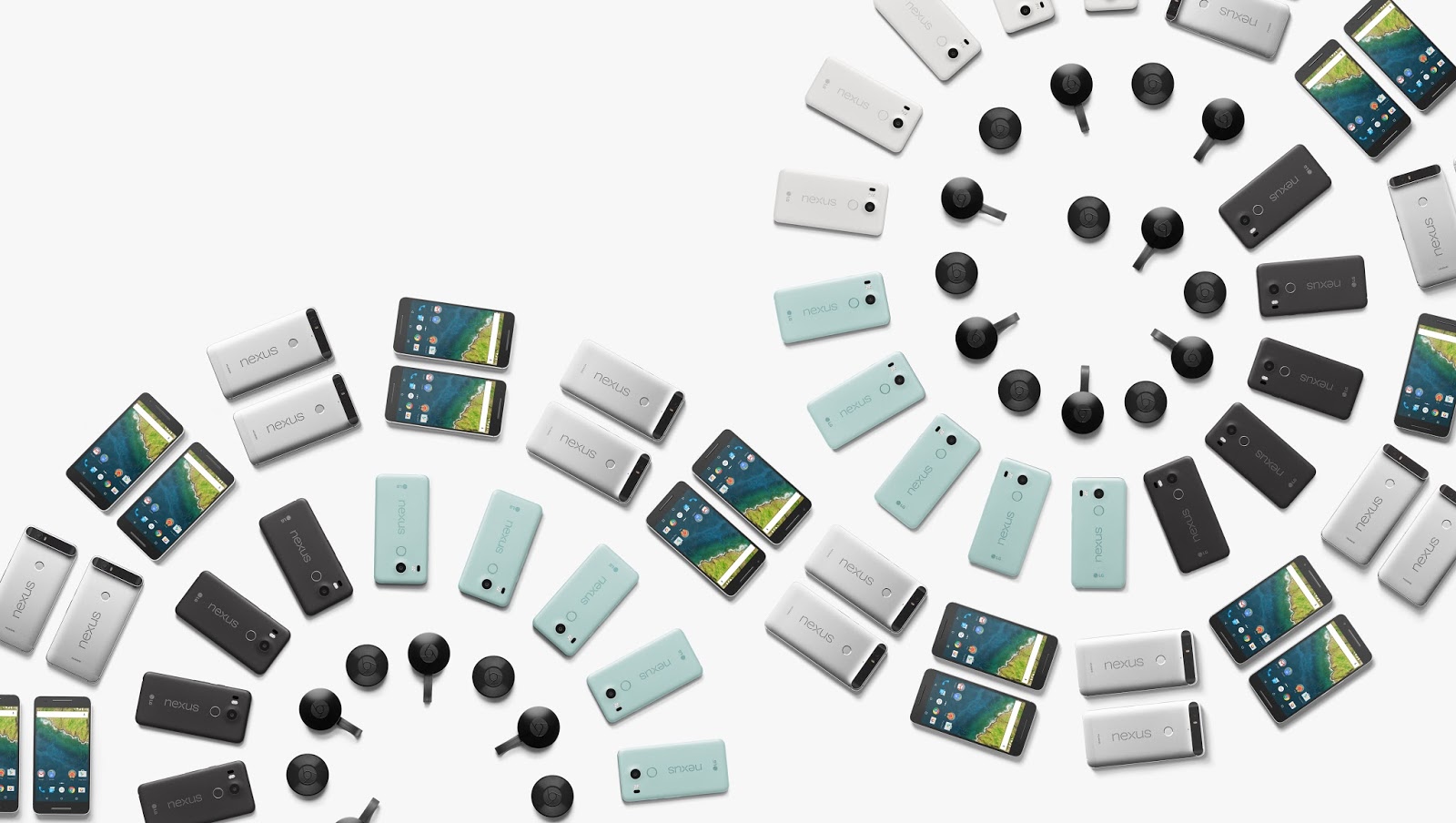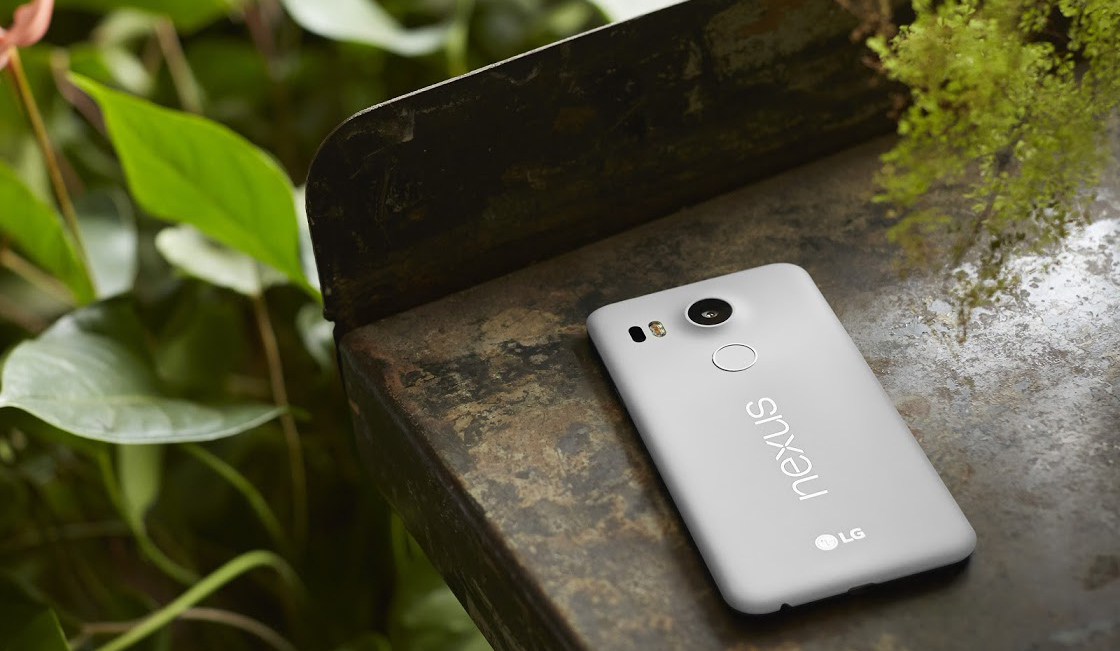
- 2 Min Read / Blog / 3.2.2020

This week’s Nexus event represented the final chapter in Google’s transition from a web services business into a consumer electronics company. It’s no exaggeration—while Google has been traditionally treated like a search company with spurious extensions into the consumer software and hardware arenas, the company’s enduring focus on product offerings that directly challenge its strongest competition indicates a trend. Google sees the value in selling beautiful gadgets that run native software—even if it is in service of getting its search ads in front of more eyeballs.
Google has enjoyed a virtual monopoly with a stable of web services that have sprouted up around Search—like the ubiquitous Gmail, Maps, and Hangouts. Now, its attention has shifted from pixels to polyurethane, and it seeks to build out a compelling product portfolio of capable and affordable hardware. This week’s Nexus, Chromecast, and Pixel introductions are just the beginning. Google is betting big on consumer hardware, and it’s going to change how the company approaches Android and Chrome OS.
Google is no longer a search company. It’s become a product ecosystem to rival Apple’s.
The company’s online Google Store has never been more packed with products and accessories that the company designs and manufactures itself. With its acquisition of Nest, Google gained not only a range of popular and forward-thinking connected home gadgets, but also a seasoned team of industrial designers and hardware engineers with roots at Apple. Google is keen, smartly, to put that team to good use. As it releases more and more imaginative hardware, native software, and services that build on its Android audience of 1.4 billion users, the Google Store of the future will almost certainly become a place customers can visit without a web browser.
Google’s Nexus handsets have long been the company’s outlet to showcase cutting-edge Android software features and capabilities, and this year’s offerings are no exception. The new Nexus 5X and Nexus 6P spearhead all-new hardware features like Android Sensor Hub—an all-in-one destination for sensor data from across the system, somewhat akin to Apple’s M9 motion co-processor in iPhones—and significantly improved camera systems. But outside of specs, the Nexus phones are the lynchpin of Google’s product strategy to attract quality-conscious smartphone buyers to the platform.

The gorgeous new Nexus 5X. (Image: Google Store)
The inception of the Nexus family was the product of a frustrating industry environment for Android fans—the first, Nexus One, was a rallying cry to contemporary Android smartphone OEMs to focus on making high-quality, high-capability devices. But beyond the call for craft was a declaration of independence from carriers, as Google sought to sell its device direct to consumers, circumventing service contracts and bloatware that have become common headaches at some of the largest carriers. But while the fight it picked with carriers in 2009 ultimately became more trouble than it was worth, a new initiative unique to the Nexus family could provide the disruption that Google was aiming for in the first place.
Project Fi could make the Google ecosystem stickier than anything you’d find at the Apple Store.
Project Fi is a Google-designed MVNO1 that piggybacks on T-Mobile’s and Sprint’s wireless data networks. It leverages voice over LTE to provide calls over data connections, and can intelligently switch between T-Mobile’s GSM network, Sprint’s CDMA network, and Wi-Fi networks to provide the strongest signal. It’s an inventive software feature on Android, assisted by hardware included with the Nexus phones, and supported by strong relationships with carrier partners. In short, it’s the kind of offering that only Google2 could deliver.
Google is trying for horizontal integration and vertical integration at the same time.
Whereas Apple’s value comes from buying hardware and software designed together by the same company, Google takes that approach a step further and adds wireless service into the equation.3 But even with that level of tight integration, Google doesn’t stop there. Consider that an Android customer today can buy and use a smartphone whose operating system, apps, web services, cellular connection, hardware, and warranty4 are all designed and developed by the same company.5 None of Google’s partners in those arenas have the scale or expertise to compete, and few of its competitors are invested in even two of those industries—let alone all of them.
Google’s consistent focus on Chromecast reaffirms the living room’s place in our digital future. While Chromecast exists at a curious intersection between Google’s platforms—it runs neither Android TV, Google’s television-optimized operating system, nor Chrome OS, as its name might suggest—the product is deeply integrated into content apps on both Android and iOS.
Chromecast is an affordable entry for iOS users into the wider Google ecosystem.
This week’s enhancements come mostly in the form of software updates, enabling new proactive downloading of certain video content and dual-screen video games on Android. But Chromecast’s app integrations—with partners like Hulu, Showtime, Netflix, and now Spotify—help users to discover the Google Cast platform and begin to imagine themselves using it. And why wouldn’t they? At $35, Chromecast is neatly half the price of the low-end Apple TV, and while AirPlay is better integrated across iOS, Google Cast has saddled itself to many of the core apps users will want to show on their TVs most often.

Chromecast in Lemonade, Black, and Coral. (Image: Google Store )
For Apple, the future of TV is apps. While its AirPlay casting feature is a great way to share content from iPhone to the largest screen in the home, Apple is betting on rich native app experiences to populate tvOS on the new Apple TV. For Google, the future of TV is both apps and casting. Android TV is a content-first OS for TVs, and Chromecast fills out the tiny price umbrella left by the $99 Nexus Player. It seems that Google is eager to release hardware for any use case and see what sticks.
Just want to cast from your phone to your TV? Or do you want full-featured apps and games on your TV? Google takes a “yes, and” approach to product development.
The sheer scale of Google’s myriad product offerings is staggering, especially when presented in light of how they compare with Apple, its hardware-focused competitor. For iPhone 6s there’s the Nexus 5X, for the iPhone 6s Plus there’s the Nexus 6P. But all the way through the product lineup, there are equivalencies—the Nexus 9 is akin to the iPad Air, the Chromebook Pixel competes with the MacBook Pro, Nexus Player for the upcoming Apple TV, and so on.6
In 2008, it was hard to find places where Google and Apple were directly competitive. Today, it’s hard to find places they’re not.
In fact, Google’s wireless offerings are now directly competitive with some of Apple’s lesser-known peripherals. Following the addition of audio support to Google’s Cast platform, the new Chromecast Audio is similar to the age-old AirPort Express, both of which enable users to retrofit their speaker systems to live in the audio streaming world. It’s a subtle difference in the positioning of each product, but consumer interest in updating their audio equipment for a wireless era seems as relevant now as it did in 2004.

Google dives deep into the stream of TV and audio with Chromecast, Chromecast Audio, Nexus Player, and Nvidia Shield.
Pixel has been the codename for Google’s line of premium and high-powered Chrome OS notebooks, and Tuesday’s event expanded the Pixel family to include a new transformable tablet-and-keyboard product called the Pixel C.7 Pixel C is a powerful Android tablet designed to snap into a magnetic keyboard accessory, much like the Microsoft Surface or Surface Pro, an inspiration shared by Apple’s new iPad Pro. Pixel C is expensive for an Android tablet at $499, but showcases Google’s intention for Android to power premium workplace computer solutions alongside Chrome OS, which has come to dominate the education space.

Image: Google Store
What is Google’s play with the Pixel C? Certainly it can’t just be ticking off one more product category it had previously ignored. The Nexus 9 remains a strong Android tablet offering, although this year’s lack of a hardware update will make the performance difference an issue. Why introduce an entirely new product, with complex magnetic interaction modes and an aspect ratio modeled after A4 paper? Why not just update the Nexus 9 for USB-C and be done with it?8
Pixel represents an opportunity for Google to build the devices its web services deserve.
Pixel is the proverbial Cadillac of the Google lineup. Just as car manufacturers debut their latest innovations in top-end sports cars that few people ever buy, and just as Apple showcases its hardware prowess in the Mac Pro that few of their customers even realize exists, the Pixel family represents an opportunity for Google to build the devices its web services deserve. Many of the innovations Google debuts in these and future Pixel products—like ultra–high-resolution displays, multi-microphone arrays, or inductive-charging Bluetooth keyboards—will trickle their way down to other products in the lineup.

But Google’s eagerness to strut its industrial design stuff with ambitious new hardware demonstrates its resolve to become a product company to be reckoned with. These new Android devices aren’t vaporware like the Nexus Q or Google Glass before them—Google is making confident strides in the realm of consumer hardware, and seems poised to become a major player in nearly every product category. And this ambition promises to guide the ongoing iteration of Android and Chrome hardware and software.
Google wants to become your one-stop shop for technology.
Google is a company with a lot of spinning plates, spanning diverse industries and categories—an approach it formalized with its inside-out transformation into Alphabet. But these once-scattershot ventures into the world of hardware have begun to materialize into a more coherent vision in recent years. Google wants to deliver on the vision of one company for all customer needs—from affordable, beautiful hardware to free, reliable web services and gorgeous mobile apps. Google wants to be the one company that cheaply connect customers to the web, via cellular or Fiber or balloons. And it can be the one company that provides the router, and the tablet, and the OS, and the browser, and the web apps that started it all. All you need to do is look at some ads.